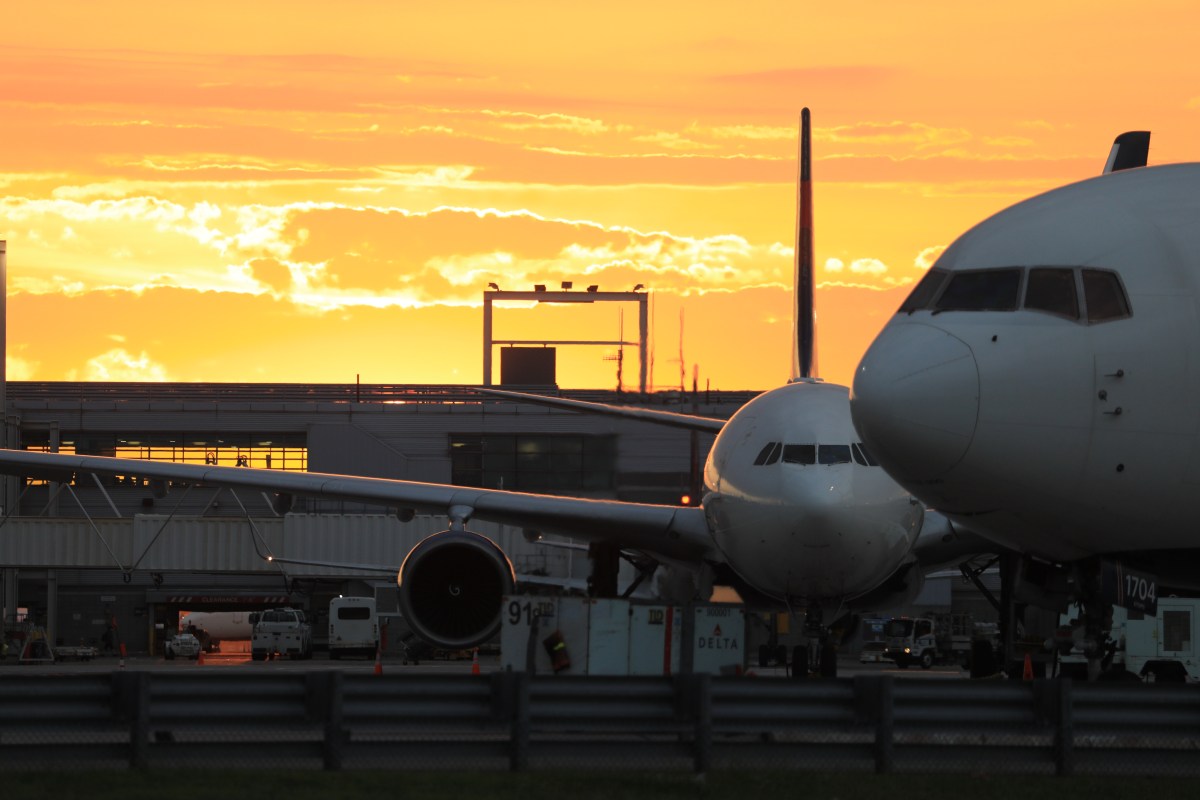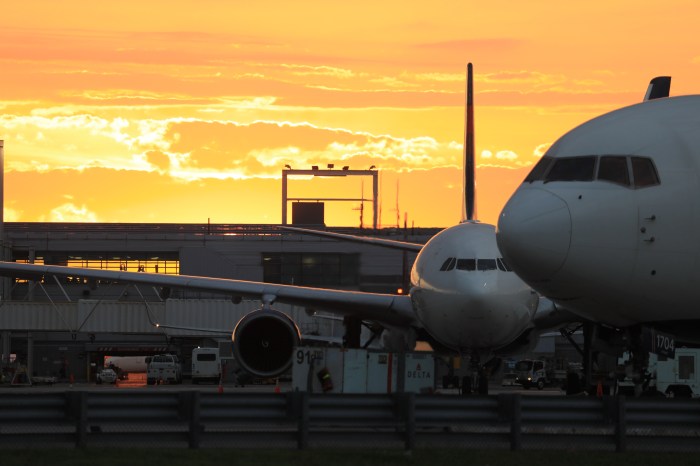How N.Y.U. helps community
To The Editor:
As a longtime Village resident and administrator at New York University, I understand the tension between the university and our neighbors. But as an adviser to thousands of N.Y.U. students committed to community service in our city and, indeed, around the world, I cannot remain silent when I read a letter which asks, “What has N.Y.U. done for the community lately besides overwhelm it with thousands upon thousands of spoiled, drunken students? (“Park renovation: Just say no,” letter, by Terese Coe, Dec. 12, 2007).
Last semester, N.Y.U.’s 400 President’s C-Team volunteers logged 5,500 hours at 17 partner agencies, serving children, teens, seniors and the homeless. At the university’s holiday party, N.Y.U. employees donated 2 tons of nonperishable food to New York City food pantries. Our 700 America Reads/America Counts tutors, provided 68,000 hours of tutoring to children at 107 public schools throughout New York City. The 1,000 students in our scholars programs contributed 20,000 hours of community service. And our employees donated more than $100,000 to the N.Y.U. Community Fund, which has raised nearly $2 million for local nonprofit groups since 1982.
I realize many of our students, like college students everywhere, engage in nuisance activity that challenges the patience of our neighbors. But that behavior should not blind us to the enormous good that N.Y.U. does throughout the city. To suggest that N.Y.U. is comprised chiefly of “spoiled drunken students” is unfair and inaccurate. It’s like saying all Village residents are hostile and ill-informed. Sometimes, they’re just the loudest.
Gloria Cahill
Cahill is director of community service, New York University
Chain, chain, chain of fools
To The Editor:
Re “Trying to find a new formula to tame the spread of chains” (news article, Jan. 2):
Thank you for the article by Patrick Hedlund regarding The East Village Community Coalition’s concern that the streets and avenues of our neighborhood do not become a Downtown replica of the strip malls across this country.
The danger of franchises, chain and big-box stores lies in the destruction of commercial diversity and creativity, and related to these, in secondary residential displacement.
Contrary to the article, I alone have not initiated E.V.C.C.’s interest in formula retail zoning. Our group is an effort among an inclusive “we.” We recognize that the issues related to maintaining commercial creativity and diversity and avoiding secondary displacement are complex.
While formula retail zoning is the most appropriate approach we’ve found to date, the Pratt Center’s study will surely lead to greater insights.
Mr. Hedlund’s article focused quite a bit on coffee shops. But much more is at stake than where we choose to buy our cappuccinos. As hardware stores, laundromats, bodegas, shoe repair shops, butchers and other decades-old local establishments are replaced by businesses focused on clienteles largely from elsewhere selling relatively luxurious goods and services, secondary displacement is speeded along and our neighborhood loses more ofour economic and ethnic diversity.
Our interest in people choosing to shop locally, and in pursuing formula retail zoning, is very much to help maintain this diversity.
We welcome anyone wishing to become part of the “we” focusing on the issues raised in Mr. Hedlund’s article. Alison Franks, our managing director, is at 212-979-2344 and alison.evccnyc@gmail.com.
Michael Rosen
Rosen is a founding member, East Village Community Coalition
Operator’s spin on copters
To The Editor:
Re “Helicopters are hellish, plus illegal, suit charges” (news article, Jan. 2):
It’s difficult to know where to begin when it comes to the numerous inaccuracies in The Villager’s article concerning the frivolous lawsuit brought against the Hudson River Park Trust, Air Pegasus and Liberty Helicopters, relating to the heliport that my family has had the privilege to operate for nearly three decades.
First, to repeat the claim that outgoing Friends of Hudson River Park Trust Chairman Al Butzel made about my purported financial relationship and friendship with James Ortenzio — who recently pleaded guilty to tax evasion charges — without even checking with me is simply irresponsible journalism.
For the record, neither Air Pegasus nor the Trenks ever paid James Ortenzio a dime to settle a dispute between Air Pegasus and Liberty Helicopters. The $80,000 (and it is reported to be substantially more) that passed hands was paid by Liberty Helicopters directly to Ortenzio. Ortenzio’s resolution of that suit was so skewed in Liberty’s favor that the New York State courts reversed his findings and removed him as arbitrator.
Second, Mr. Ortenzio and I hardly have a “close relationship,” as Mr. Butzel said and The Villager repeated. Quite the contrary, Ortenzio and I have never been friends. Again, a simple phone call could have cleared up this misinformation.
Last, though the Friends of Hudson River Park would like to engage in linguistic tap dancing about the Hudson River Park Act, the facts are clear: The heliport is mandated to remain at its current location until a suitable alternative is found and operational. The Trust and the city are vigorously pursuing alternative sights.
Indeed, my daughter Abigail and I met with Butzel and offered him a viable plan to relocate the heliport west of the bulkhead as the act mandates, and he refused to listen to it, because, as it is now clear, he was intent on pursuing the headline-grabbing lawsuit.
Why must the heliport remain open?
First, because emergency services personnel need a heliport for public safety; the security of the city demands it. In the days and months after Sept. 11, 2001, W. 30th St. was a major staging point for federal, state and city relief and security groups.
Also, news copters need a heliport from which to disseminate information to the public.
Last, the Hudson River Park itself needs a heliport for the $1 million a year that we provide that helps to maintain the park.
Alvin Trenk
Trenk is president, Air Pegasus Manhattan
Rebuts Butzel on Ortenzio
To The Editor:
Re “Helicopters are hellish, plus illegal, suit charges” (news article, Jan. 2):
Chelsea residents have been against a heliport on the West Side for decades. Many of us remember when helicopters landed on the roof of the PortAuthority building occupying the one square block between Eighth and Ninth Aves. and 15th and 16th Sts.
Chelsea Waterside Park Association and I are co-plaintiffs in the Friends of Hudson River Park complaint against the heliport operators and the Hudson River Park Trust. The present heliport, located within the Hudson River Park in its upland portion at 29th St., is an illegal use, and we are urging H.R.P.T. to cancel the heliport’s month-to-month lease. It is time. The excuse that this part of the park is not used is no longer true; H.R.P.T. has built a beautiful segment of park adjoining the heliport: a nature habitat, a boathouse and pier and the float bridge. The very popular Maritime barge is now located at the western end of the float bridge. When Chelsea Cove is completed, it too will be besieged with the noise of helicopters.
I am disappointed that my friend Al Butzel, who as chairperson of the Friends, spearheaded the litigation, engaged in conjecture that the board of the Trust had not removed the heliport because of a relationship between the Trust’s former chairperson, James Ortenzio, and the heliport operators. James Ortenzio was the most effective chairperson that the Trust ever had, and much of the park that we enjoy occurred under his leadership. I think the most logical reason for the Trust’s failure to end this noxious use, the heliport, was that it was a rent payer, and that rent went into the operating and maintenance budget of H.R.P.T.
So why did C.W.P.A. and I sign on to a complaint which has language we are now disowning? It was because when we agreed to become co-plaintiffs we were assured that there were no changes from an earlier version. It was a mistake, but in the context of being a co-plaintiff on other complaints, such as the successful Basketball City case, we had no reason not to trust Al Butzel. I believe this was an honest mistake on both of our parts. Now, let’s move on and get the park finished and, of course, let’s get the heliport the hell out of there.
Robert Trentlyon
Trentlyon is vice president, Chelsea Waterside Park Association
Precious hours of peace
To The Editor:
Re “E. Fifth neighbors want even tighter lid on hotel” (news article, Jan. 2):
Your article made a serious error in describing the hours the Cooper Square Hotel is being allowed to run its outdoor first-floor restaurant under the terms stipulated by Community Board 3. If, as Albert Amateau reported, the restaurant had to close at 9 p.m. nightly, that would be reasonable enough. Instead, C.B. 3 has granted them the 10 p.m. and 11 p.m. closings they asked for. And yes, it’s one yard away from 60 people’s bedroom windows and 50 feet from a home for seniors and the disabled. Amateau got that right. Unfortunately, his error and the headline make the E. Fifth St. Block Association look like unrealistic cranks.
Carrie Schneider
R.I.P. East Village
To The Editor:
Re “Worn down by rent woes, shoe store is getting boot” and “2nd Ave. Deli reopens in Midtown, and near 3rd Ave.” (news articles, Dec. 27):
These two articles were like twin epitaphs for this neighborhood. For those of us who have been here long enough to remember when below 14th St. was still the Lower East Side, neighborhood is synonymous with home.
Home is where you are greeted by name by shopkeepers as they raise their storefront gates in the morning. Home is where a package is delivered when you are not in or where you can leave a set of keys when your cousin is arriving from Oshkosh and you’re at work. (That is what the shoemaker does for many.) Home is where you can run into a shop and borrow $50 because you came out without your wallet and are in a rush. (The 2nd Ave. Deli was already my bank because they cashed checks for me — including third party!)
For those of us who for years fought for this community against the criminal element and city administrations that saw this as a place to put every social service facility that nowhere else would tolerate, we are seeing the unintended consequences.
We have made it safe for every banking institution in New York to locate a branch on every corner of our home. For all intents and purposes we have become Midtown — and where do you leave your keys in Midtown? Does the Chase bank really need to have its sign so large that it could be seen from space, and did Commerce Bank have to bring its jarring pinball machine-like design onto 10th St., a totally residential block with landmark 18th- and 19th-century structures? Only North Fork gets high marks for sensitivity for making an effort to not look like it came from another planet — albeit losing points for their homage to graffiti in the interior.
And we won’t have seen the end to the unintended consequences of making our neighborhood safe and livable until we experience the impact of the city’s stubborn and wrongheaded decision to leave the west side of Third Ave. and the streets between to Fourth Ave. out of the proposed new zoning, which would prohibit monstrosities like N.Y.U.’s E. 12th St. dorm. Just wait until the planned commercial office building replaces Cooper Union’s Engineering Building on Astor Pl.; fifteen hundred office workers utilizing this community’s services and not one penny of real estate taxes to contribute to their improvement — because Cooper will get the money. But why would a neighborhood need better services when all it has in it are students, hotel guests, bankers and office workers — transients all? And transients do not define a neighborhood, unless you are thinking of Midtown.
Marilyn Appleberg
Appleberg is president, 10th & Stuyvesant Sts. Block Association
Critical Pier 40 decision
To The Editor:
Re “Pier plans are honed as process comes down to wire” (news article, Dec. 12):
As the Hudson River Park board of directors, chaired by Diana Taylor, prepares for an imminent vote on the development of Pier 40, the West Village must prepare itself against the possibility of a decision that will drastically alter the space we call home.
The private development of Pier 40 will send ripple effects throughout the West Village. The Pier 40 Working Group hit it on the head in their recommendation: putting the needs of our community at the center will do far more for our quality of life than private development will. The Trust stands at the crossroads of an important decision where they can say no to both proposals before them and say yes to the residents, business owners, families, L.G.BT. youth and parkgoers who make up the very fabric of the West Village.
The stage is set: Related Company’s Performing Arts Center, which includes Cirque de Soleil as a main tenant, and Camp Group/Urban Dove’s “People’s Pier” stand lurking above a Village that harbors a strong history of community involvement.
These last few weeks before us provide a unique opportunity to urge the Trust to vote no to private development — a finale that represents a promising opening act of a community-centered development initiative.
Let the Trust know how important the West Village and community-centered development is to you via e-mail: comments@hrpt.state.ny.us.
Glo Ross
E-mail letters, not longer than 250 words in length, to news@thevillager.com or fax to 212-229-2790 or mail to The Villager, Letters to the Editor, 145 Sixth Ave., ground floor, NY, NY 10013. Please include phone number for confirmation purposes. The Villager reserves the right to edit letters for space, grammar, clarity and libel.


































